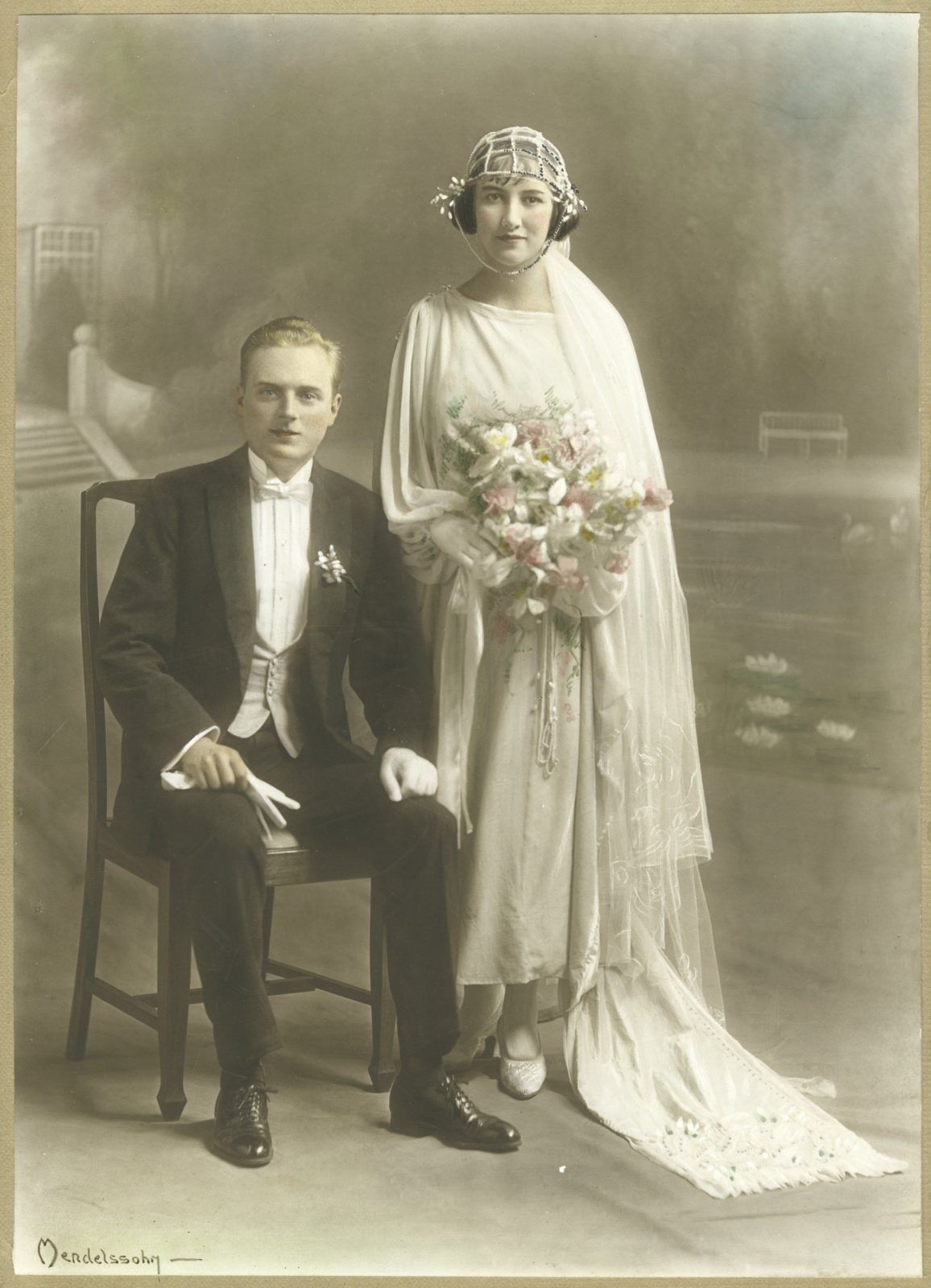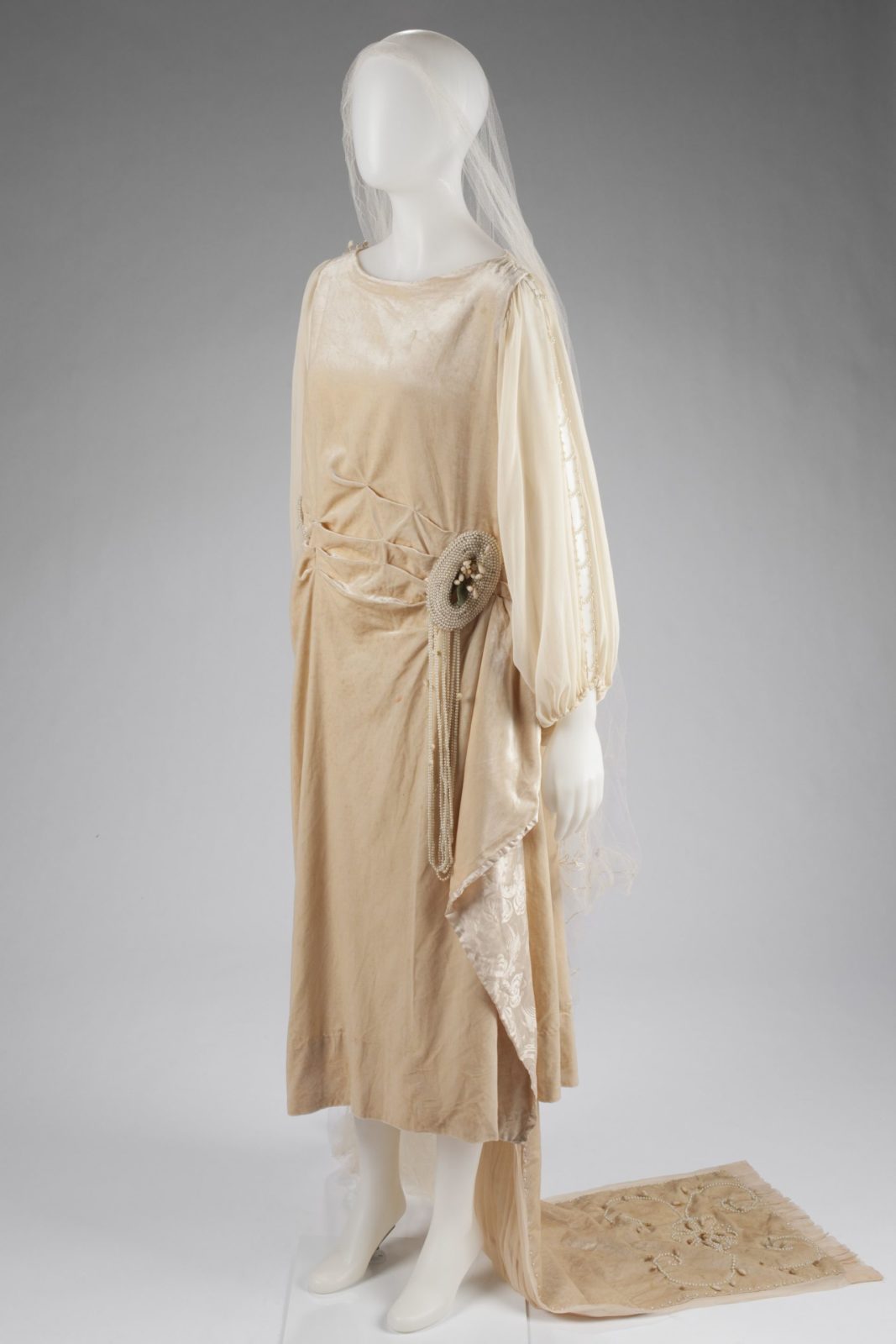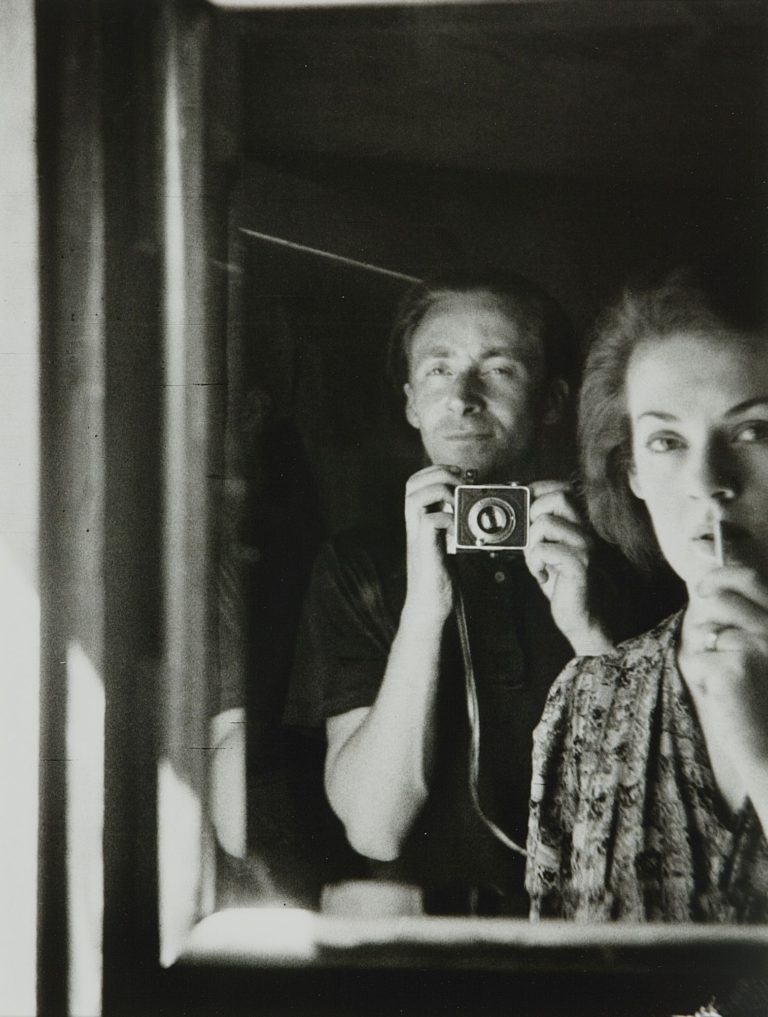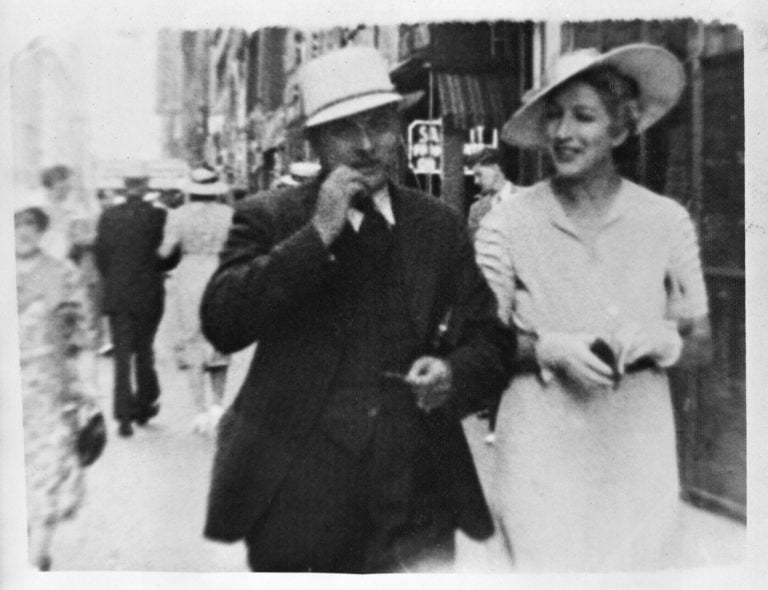Lili Vrahamis was one of the thousands of brides who migrated from Greece to Australia. Having been engaged to her cousin Letho (Eleutherios) Sigalas in 1920, she got on board the Largs Bay two years later, along with her future father-in-law, James (Iakovos) Sigalas, one of the migrants who had made significant impact on Melbourne’s life, opening one of the city’s first cafes, The Anglo-American, in 1906.
Letho was already in Melbourne looking after the family business and waiting for his bride-to-be. During the time that they were apart, the young couple communicated through postcards, Letho writing in English and Lili responding in French (her father had insisted on her having a good education, to compensate for the lack of dowry).
The couple were married at the Greek Orthodox Church on Victoria Parade on 18 July, 1923 just eight days before Lili’s 19th birthday, and lived a long and happy life together.
Ninety-five years later, Lili and Letho’s love story lives again as part of the Immigration Museum’s Love Exhibition, the bride’s cream-coloured velvet wedding dress, made by a Greek dressmaker in Melbourne, being one of the objects selected by the Museum’s curators to tell the 37 stories of love.
“We’ve been telling stories of migration for many many years,” says Moya McFadzean, Senior Curator of Migration and Cultural Diversity at Museums Victoria.
“We’ve been thinking of new things to explore and the idea of Love came up, as a kind of a key universal theme, something that we have in common, as sort of a shared humanity.”

A wedding photo of Lili and Letho Sigalas taken in Melbourne on 18 July, 1923. Digital reproduction.

Lili's cream wedding dress, donated by her family to the Immigration Museum.
Thus Love was born, in partnership with the Heide Museum of Modern Art in Heidelberg, celebrating Melbourne as both the adopted country of migrants, and a capital of artistic excellence.
Taking place in the Immigration Museum’s majestic long room space, Love has a very contemporary feel, the modern approach juxtaposed with the 19th century neoclassical setting (the Museum stands where the city’s old customs house used to be on Flinders Street).
The overall approach is fresh and hardly academic, focusing on first-hand narratives, through recorded interviews, making the experience very personal and evoking different kinds of emotion.
“We look at devotion, at grief and heartache, at romance, at the enduring relationships that people have,” Ms McFadzean explains, clarifying that the exhibition goes well beyond the notion of ‘romantic’ love, aspiring to be as inclusive and diverse as possible – not only ethnic, but also in terms of gender, sexuality, and age, as well as the nature of the relationships.
“We also look at the love between family members and the love between friends, at love in all of its forms if you like.”
She is first to admit that tackling such a “massive theme and trying to create parameters around it” was challenging.
“We weren’t trying to solve all the questions about what is love, it’s not a philosophical exhibition, it’s a kind of emotional exhibition.”
The solution was to keep it as simple as possible.
“Every story has an object that connects people and provides a starting point for them to tell their stories,” she explains, describing how the curatorial team first started selecting objects from the Immigration Museum’s vast collection; even including objects that are shown for the first time, despite being part of the collection for more than 100 years.
“That is really exciting as well, to be able to use the theme of love as a way to bring out our collection in unexpected ways,” she says.
“For example, we got a beautiful folio work from the 1840’s featuring birds of Australia and telling the story of Elizabeth and John Gould, a couple of famous ornithologists and bird illustrators; their story is that of a genuine partnership between two creative people as a husband and wife at the time.
“On the other extreme we have some very simple baby blankets that were collected by the Museum a few years ago and relate to the story of a Southern Sudanese family of refugees, who crossed three countries in Africa to seek asylum in Melbourne.
“The blanket, held by the mother is a perfect example of how a simple object can represent a very powerful migration story,” Ms McFadzean says.
“It’s about devotion and sacrifice and endurance.”

Endurance was what made Lili and Letho Sigalas’ story special.
“It’s a really lovely story that starts with this cream velvet dress that we have in our collection from the Sigalas family,” she says, explaining how the couple’s story might challenge one’s idea of love and the presumptions about arranged marriages.
“It might have been an arranged marriage, but it was actually a relationship of great love and warmth and respect – they really deeply loved each other.
“There is a lovely story of a successful marriage, based on devotion and the idea that love is something that you work at and work for and it can be something enduring and lasting.”

The exhibition also focuses on the way Melbourne’s creative communities challenged the traditional ideas of love, through the stories of the artists included in the Heide Museum collection.
Sitting at a property established by John and Sunday Reed in the 1930’s, Heide Museum carries a legacy of one of Melbourne’s leading communities of artists and creative people who were drawn there, lived there and created “some amazing art”, as Ms McFadzean puts it. Artists such as Sidney Nolan, Arthur Boyd, Albert Tucker, Joy Hester, Mirka Mora, were not only some of the biggest names of the Modernist movement that shook the Australian art establishment in the 1930’s-50’s, but also people who adopted alternative lifestyles, which makes their stories (and that of the complex relationships that evolved among them) relevant to the Love exhibition.
“John and Sunday Reed were the central patrons and they had a very soulmate-like relationship, they were a perfect fit. But Sunday also had a long and passionate affair with Sydney Nolan,” says the curator, explaining how Love puts Heide as a starting point to all those complex love stories that were in line with the modern ideas of a relationship.
Bringing all these stories together, and having objects given a new life has been one of the most fascinating parts of the exhibition.
“It’s at the heart of what we do as curators all the time,” Ms McFadzean says, explaining how emotional this experience has been for everyone involved.
“The important thing was to let these people tell their stories themselves, the curators taking a back seat.
“We wanted visitors to have these real voices in their ears as they are looking at these objects and worked with people who were really generous with their stories and let us record them. It is an incredible privilege.
“Some of these were happy stories, others were heartbreaking; there was a range of experiences and I can recall quite a few tears in the room from all of us.
“It is quite an emotional roller coaster to be embedded in people’s lives like this.”
The visitors are encouraged to have their own stories embedded as well.
“You have the opportunity to leave your own love story behind,” the curator says, impressed that the wall allocated to document visitors’ stories was already filled up during the exhibition’s opening weekend.
“It’s been really wonderful seeing visitors engaging and being moved like that.”